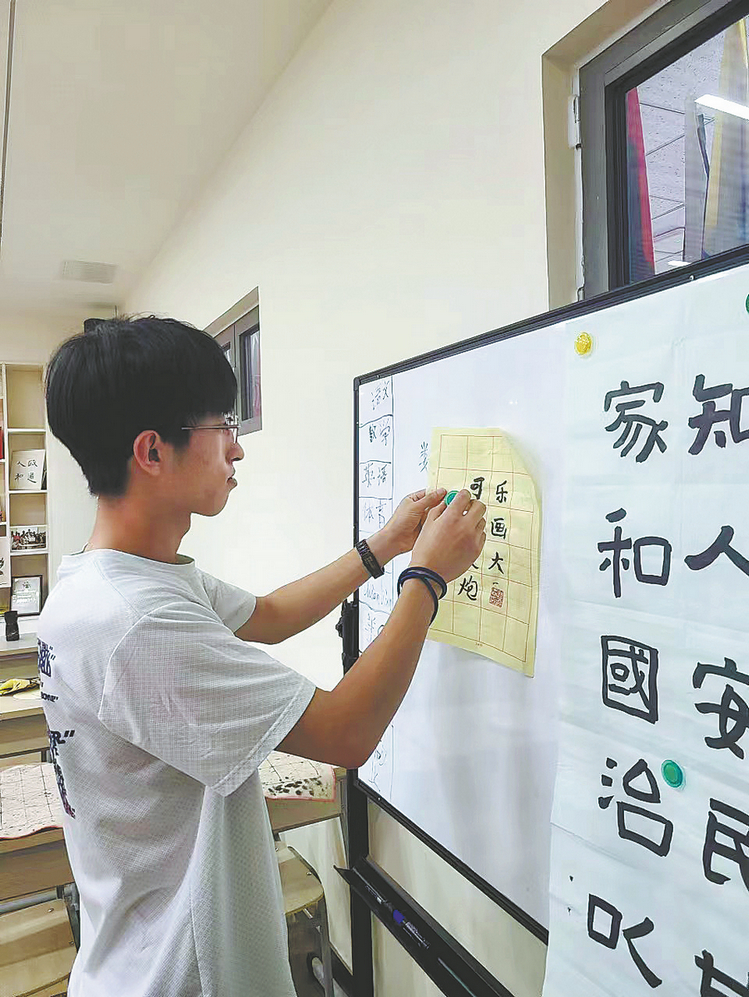

"I was exposed to Vietnamese calligraphy when I was a child, and it was one of the things that made the biggest impression on me," An says.
Watching films about Chinese culture, the seeds of An's interest in calligraphy grew. When he came to Beijing in 2019 for his PhD studies focusing on the environment, he also spent time practicing Chinese calligraphy, joining the calligraphy club in 2020, and committing in earnest to his journey of learning the art.
"I have a lot of projects and a busy schedule as a PhD student," he says. "But I still conscientiously attend calligraphy classes."
Initially, An says that he did not understand the techniques involved in Chinese calligraphy, but as a result of Professor Liu Hongli's classes, he began to develop an understanding of the basic strokes.
All Chinese characters are formed of a series of strokes. Professor Liu starts out by having the international students meticulously copy the way she writes each character. She also encourages them to write characters on fans and lanterns, which greatly increases their interest in practicing calligraphy.
"I tell them what each character means," Liu says. "An has shown a great interest in Chinese characters, and he is conscientious and persistent."
To gain a deeper understanding of calligraphy, An has visited many ancient sites in Beijing, including the Confucius Temple and the Forbidden City. He also frequents art galleries.
An says that places where he has seen treasured scrolls of calligraphy have left a profound impression, and are a major source of inspiration.
He has also participated in a number of calligraphy competitions, both at school and elsewhere, including international events.